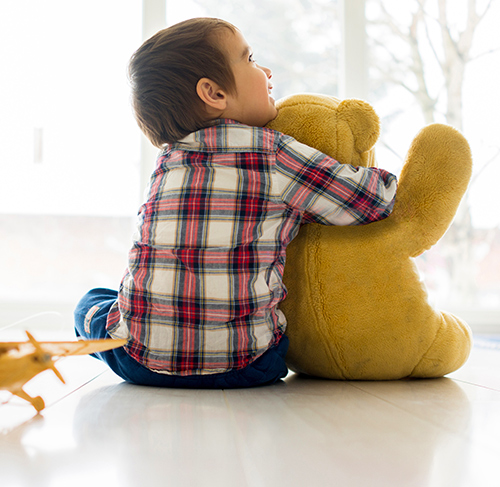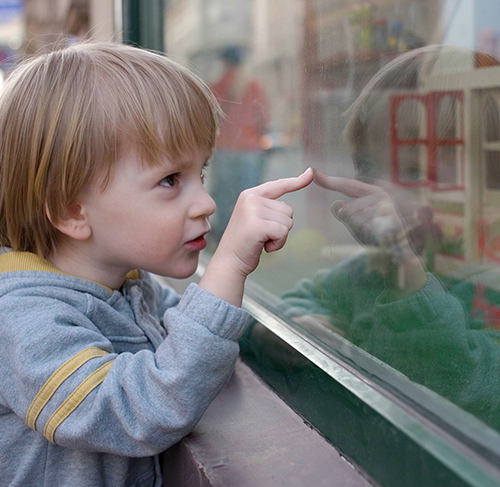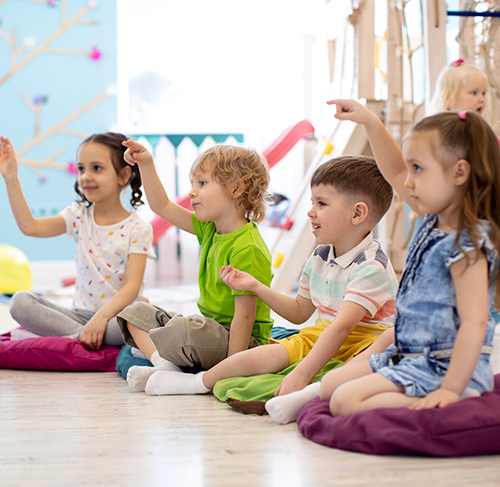Literature Review
Autism Spectrum Disorder (ASD) is a neurodevelopmental disorder characterized by deficits in social communication and social interactions. The Centers for Disease Control and Prevention released new data on the prevalence of autism in the United States. Its data showed that 1 in 68 children (1 in 42 boys and 1 in 189 girls) are diagnosed with ASD (CDC, 2014). As per the DSM-5 (Diagnostic and Statistical Manual of Mental Disorders), the first diagnostic criteria for ASD are as follows:Persistent deficits in social communication and social interaction across multiple contexts, as manifested by the following:
- Deficits in social-emotional reciprocity, ranging, for example, from abnormal social approach and failure of normal back-and-forth conversation; to reduced sharing of interests, emotions, or affect; to failure to initiate or respond to social interactions.
- Deficits in nonverbal communicative behaviors used for social interaction, ranging, for example, from poorly integrated verbal and nonverbal communication; to abnormalities in eye contact and body language or deficits in understanding and use of gestures: to a total lack of facial expressions and nonverbal communication.
- Deficits in developing, maintaining, and understanding relationships, ranging, for example, from difficulties adjusting behavior to suit various social contexts; to difficulties in sharing imaginative play or in making friends; to absence of interest in peers (DSM-5; APA 2013).
Research Question
Will participating in Child-Centered Group Play Therapy activities increase positive social interaction for elementary-age students diagnosed with Autism Spectrum Disorder (ASD)?
Participants
For this study, elementary school-age children diagnosed with ASD have been randomly selected. All participants are currently enrolled in a special education class. The elementary school selected for the study has been asked to provide a list of all students diagnosed with ASD in the special education classes that are verbal. From the provided list, children were assigned to treatment groups of 3 by random drawing within grade level (kindergarten, first grade, and second grade). The first group of children, two males, and one female are in kindergarten, all are four years old, and they all have been diagnosed with ASD. The second group of children, two males, and one female are in first grade, all are five years old, and they all have been diagnosed with ASD. The third group of children, two females and one male are in second grade, all are six years old, and they all have been diagnosed with ASD.
Behavioral Measures
Dependent Variable – Positive Social Interaction: verbal or written (to include signing) communications/exchanges that take place between the children (peer-to-peer) in the area in which the intervention is being implemented. These interpersonal exchanges are positive in nature. These may include, but are not limited to greeting a friend, getting a friend’s attention by tapping them on the shoulder and/or leg (when sitting), sharing objects, asking peers to share objects, providing a play idea to a peer, saying something nice to a peer, and responding to these interactions in a positive manner. This could be by saying thank you, or saying something nice in return, by engaging in the play idea a peer had, etcetera. For example: (1) verbal positive social interaction-Sally says to Tommy, “come play with me,” and (2) non-verbal positive social interaction-Tommy approached sally and then tapped her shoulder. This last example contains two nonverbal interactions.
Data Collection
Data will be collected by implementing an event recording system in which trained observers will document individual occurrences of the defined behavior during a 30-minute observation period. Each time a Positive Interaction is observed, the instance is recorded (see attached datasheet). This will be done for each participant in each group. Therefore, trained observers will be recording the number of occurrences of positive interactions for each participant. At the end of the observation period, the number of positive interactions will be counted, and the total number of occurrences will be reported as a measure of the behavior. Sessions will be conducted every day for 30 minutes. Data of all occurrences will be counted, and the total number for the session per child will be plotted on the graph. During the intervention period, trained observers will also conduct data collection sessions using the same event recording system at the playground. During the children’s 30-minute recess, this data will assess for generalization of the intervention.
Interobserver Agreement
Interobserver Agreement will be calculated using a total agreement approach. We will sum up the total number of responses recorded by each observer, then the smaller total will be divided by the larger total, then the total of this division will be multiplied by 100. This will yield the percentage of agreement between the observers. An example of this can be observed in the data sheets provided for a week of observation of Group 1. The total number of events observed by Sam was 95, and the total number of events observed by Tom was 89. We divide 89 by 95 and get 0.94; 0.94 multiplied by 100 equals 94%. Therefore, the percentage of agreement for the first week of observation during the intervention period for Group 1 was of 94% agreement.
Baseline
During the Baseline period, participants will be in a small room (10ft by 10ft) provided by the school library. This room will be the same room use for the intervention. Toys available during the intervention will also be available during baseline. Each group will have three participants from the same grade (e.g., three first graders). These groups will remain the same for the intervention period. In addition to the children participating, a trained observer will be present collecting data. The certified Child-Centered Group Play Therapist will not be present during the baseline period.
Intervention
The same small room (10ft by 10ft) provided by the school library used for baseline will be used for the Intervention period. Each group selected during baseline will remain the same for the intervention (i.e., the three participants from the same grade). In addition to the children (participants), a certified Child-Centered Group Play Therapist will be present, implementing the intervention. Lastly, a trained observer will be present collecting the necessary data.Child Centered Play Therapy, according to Landreth (1991): is a complete therapeutic system, based on the belief that children have the capacity and resiliency, and who are quite capable of appropriately directing their own growth. While also being attentive to (1) the importance of the relationship between the child and the therapist, (2) the importance of the therapist acceptance of the child, (3) the therapist permissiveness with the child, and (4) the therapist reliance on the belief that the child has within him-self/her-self the ability to be self-directive and to become the kind of a person that satisfies the self (Axline 1969). Axline (1969) explained the child-centered approach and the dynamics of the child-therapist relationship in eight basic principles: (1) Therapist must develop a warm, friendly relationship with the child, in which good rapport is established as soon as possible, (2) The therapist accepts the child exactly as he/she is, (3) The therapist establishes a feeling of permissiveness in the relationship so that the child feels free to express his/her feelings completely, (4) The therapist is alert to recognize the feelings the child is expressing and reflects those feelings back to him/her in such a manner that he/she gains insight into his/her behavior, (5) The therapist maintains a deep respect for the child’s ability to solve his/her own problems if given an opportunity to do so. The responsibility to make choices and to institute change is the child’s, (6) The therapist does not attempt to direct the child’s actions or conversation in any manner (the child leads the way; the therapist follows), (7) The therapist does not attempt to hurry the therapy along as this is a gradual process and is recognized as such by the therapist, and (8) The therapist establishes only those limitations that are necessary to anchor the therapy to the world of reality and to make the child aware of his/her responsibility in the relationship (Axline 1969).
Experimental Design
For the purpose of this study, a multiple baseline design across groups will be utilized. However, each graph will show the collected data for each of the three participants in each group. Each graph will have two phases: (1) baseline and (2) intervention. During baseline and the intervention phases, a trained observer will also collect data on the playground to assess for generalization. This data will also be documented on both phases of the graph (see attached graph).
Conclusion
The results will be demonstrated by conducting a visual trend analysis to determine the level of treatment effectiveness for each child. The researchers will calculate the mean for each child during both phases, interventions, and baseline. Then a comparison of both scores will be conducted to establish if the intervention increased and/or decreased the number of positive social interactions for each child. For example, Participant 1 had the following positive social interactions for the baseline phase: (1, 1, 2), which gives us a mean of 1.3. For the intervention phase, the same participant had the following positive social interactions: (4, 4, 5, 5, 6, 5, 6, 6, 7, 6, 7, 8), which gives us a mean of 5.75. With the provided information, we can say that for Participant 1 in Group 1, the intervention encouraged an increase of 4.45 positive social interactions. Therefore, we can determine that the results of this study showed that CCGPT plus was effective in increasing Positive Social Interaction for Participant 1 in Group 1.
That Same Old Loop Again
This area of research needs a lot of attention, especially with the growth in this population (children with autism). I believe that if my proposal is implemented with fidelity, I and others will be able to answer my research question. It provides the necessary information needed to be easily replicated. My data collection system allows easy and straightforward analysis of the results. However, some limitations need to be taken into consideration when replicating this study. First, participants in this study despite their ASD diagnosis, all had well-developed verbal skills, so when conducting this research with less advanced children, this needs to be taken into consideration.If the collected data shows a greater number of positive social interactions between the children, I can deduct that the participation of the children in the Child Center Group Play Therapy had a positive effect on their social skills. This could be a time and cost-effective intervention since it can be done using groups. It would be valuable to increase the number of participants in the group to see if the intervention would have similar or better effects. It would also be beneficial to further observe social interaction within the classroom and during group work since the social skills needed to interact during free time can be somewhat different than those use in a classroom setting and under teachers’ directives.
References
American Psychiatric Association. (2013). Diagnostic and Statistical Manual of Mental Disorders (5th ed). Arlington, VA: American Psychiatric Publishing.Axline, V. M. (1955). Group Therapy as a Means of Self Discovery for Parents and Children. Group Psychotherapy, 8, 152-160.Balch, J., & Ray, D. (2015). Emotional Assets Of Children With Autism Spectrum Disorder: A Single Case Therapeutic Outcome Experiment. Journal of Counseling And Development , 93, 429-439.Landreth, G. L., & Sweeney, D. S. (1999). The freedom to be: Child-centered group play therapy. In D. S. Sweeney & L. E. Homeyer (Eds.), The Handbook of Group Play Therapy: How to Do It, How It Works, Whom It’s Best for (pp. 39-64). San Francisco: Jossey-Bass.Meany-Walen, K., Bullis, Q., Kottman, T., & Taylor, D. (2015). Group Alderian Play Therapy With Children With Off-Task Behaviors. The Journal for Specialists In Grourp Work , 40 (3), 294-314.Meany-Walen, K., Kottman, T., Bullis, Q., & Taylor, D. (2015). Effects of Adlerian Play Therapy on Children's Externalizing Behaviors. Journal of Counseling and Development, 93.Swank, J. M., & Cheung, C. (2017). Nature-Based Child-Centered Group Play Therapy and Behavior Concerns: A Single Case Design. International Journal of Play Therapy , 26 (1), 47-57.Learn about Social Skills Group Therapy we provide. Follow us on Facebook, Instagram, LinkedIn, and Twitter to stay on top of our latest updates.




Nothing has been posted like that yet